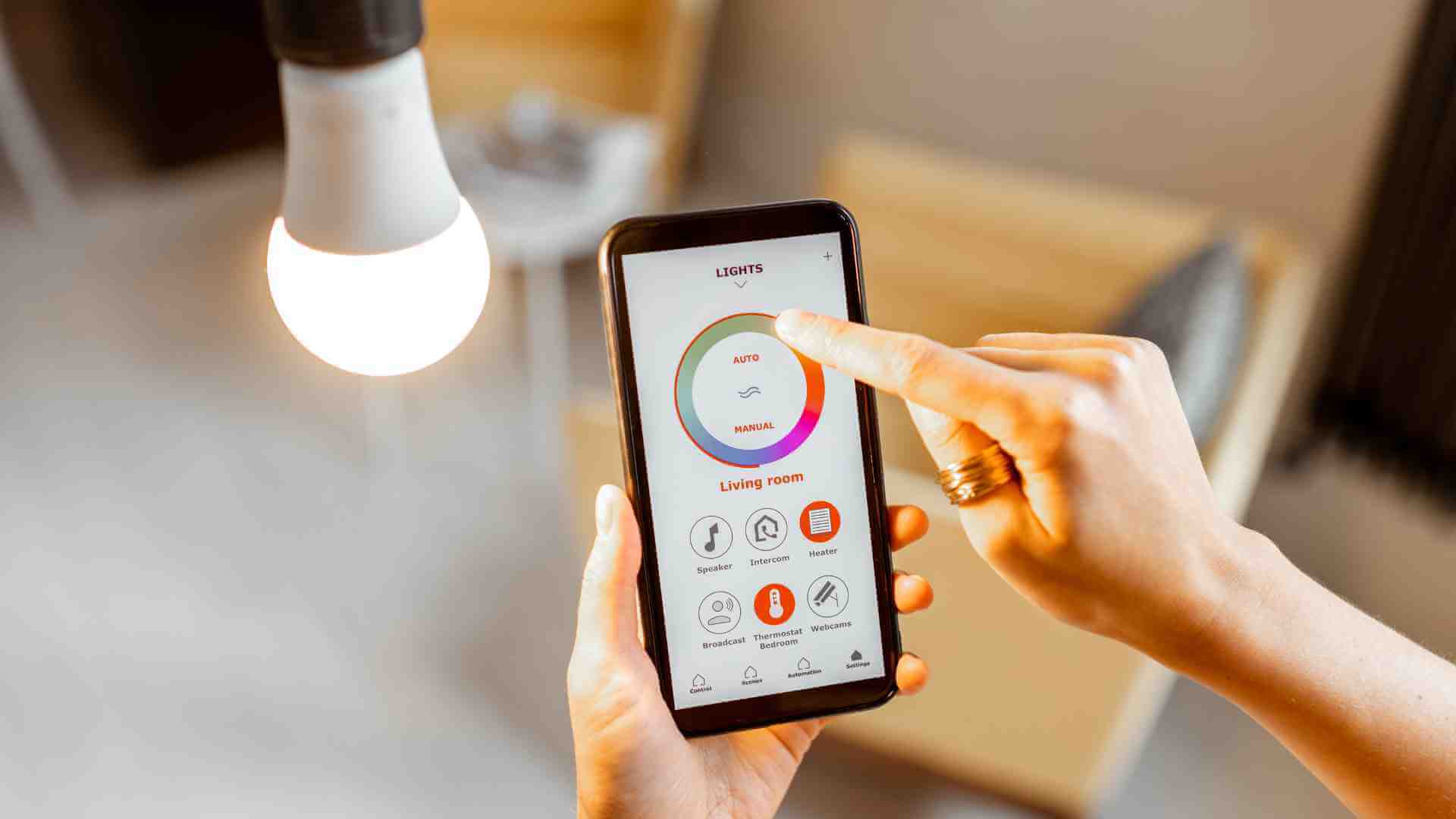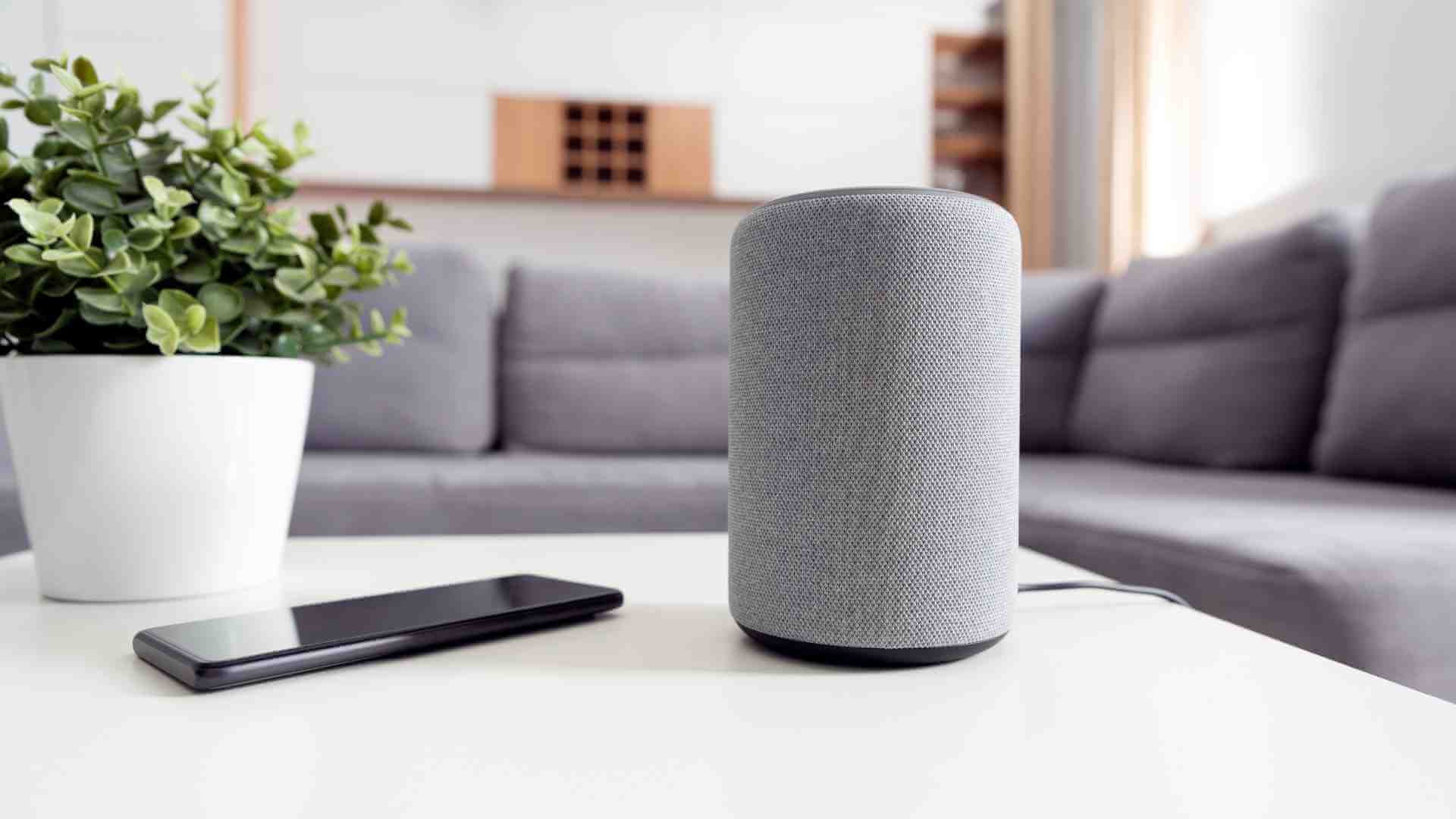How Do Smart Home Devices Communicate: The Ultimate Guide
Smart home devices communicate through a variety of protocols and technologies, such as Wi-Fi, Bluetooth, Zigbee, and Z-Wave, allowing for seamless integration and control within a smart home network. Through these communication methods, devices can send and receive commands and data, enabling users to interact with and manage their smart devices conveniently.
In today’s rapidly evolving technological landscape, the rise of smart home devices has transformed the way we interact with our environment. From smart speakers that respond to voice commands to smart thermostats that learn and adapt to our preferences, these devices offer convenience, comfort, and energy efficiency.
But have you ever wondered how these devices communicate with one another to create a cohesive smart home ecosystem? We will explore the various communication protocols and technologies that enable smart home devices to seamlessly connect and communicate with each other. So let’s dive in and uncover the fascinating world of smart home device communication.
Understanding Smart Home Devices
Welcome to the world of smart home devices! In this section, we will dive into the details of how these devices work and how they communicate with each other. Smart home devices have revolutionized the way we live, providing convenience, security, and efficiency. By understanding how these devices function, you can make informed choices when incorporating them into your home. Let’s explore the world of smart home devices together!

What Are Smart Home Devices?
Smart home devices are electronic devices that are capable of connecting to the internet and interacting with other devices in your home. They are designed to automate and enhance various aspects of daily life, making it easier and more efficient. Examples of smart home devices include smart speakers, thermostats, security cameras, door locks, lights, and appliances.
Benefits Of Using Smart Home Devices
The benefits of integrating smart home devices into your living space are numerous. These devices offer convenience, energy efficiency, increased security, and improved comfort. Here are some key advantages:
- Convenience: Smart home devices allow you to control various aspects of your home with a simple voice command or a tap on your smartphone. You can dim the lights, adjust the thermostat, or lock the doors without leaving your seat.
- Energy Efficiency: With smart devices, you can reduce your energy consumption by monitoring and controlling your lighting, heating, and cooling systems more effectively. They can automatically adjust settings based on your preferences and occupancy, saving both energy and money.
- Increased Security: Smart home security devices provide peace of mind by keeping you informed about any unusual activities in and around your home. You can receive real-time alerts and monitor your property remotely, ensuring the safety of your loved ones and belongings.
- Improved Comfort: From adjusting the temperature to your preferred setting before you arrive home, to playing your favorite songs as you walk through the door, smart devices can create a personalized and comfortable living environment.
Types Of Smart Home Devices Available In The Market
The market is flooded with a wide range of smart home devices, each catering to different needs and preferences. Here are some popular types of smart home devices:
| Device Type | Description |
|---|---|
| Smart Speakers | These devices use voice recognition technology to play music, answer questions, control other smart devices, and provide information. |
| Smart Thermostats | These devices can regulate your home’s temperature based on your preferences, schedule, and even weather conditions, saving energy without compromising comfort. |
| Smart Security Systems | These systems include devices such as cameras, door/window sensors, and alarm systems that help you monitor and protect your home from potential threats. |
| Smart Lighting | These devices enable you to control the brightness, color, and scheduling of your lights, creating the perfect ambiance for any occasion. |
| Smart Appliances | From refrigerators to washing machines, smart appliances offer features such as remote monitoring, energy optimization, and personalized settings for increased efficiency. |
These are just a few examples of the vast array of smart home devices available in the market. With so many options, you can choose the ones that best suit your lifestyle and transform your home into a smart haven.
The Role Of Wireless Communication In Smart Homes
Smart homes have revolutionized the way we live, providing us with advanced control and automation of various devices. One crucial factor behind the seamless integration of these devices is their ability to communicate wirelessly. In this section, we will explore the importance of wireless communication in smart homes and how technologies like Wi-Fi and Bluetooth play a vital role in enabling a connected ecosystem.
Importance Of Wireless Communication In Smart Homes
Wireless communication is the backbone of any smart home system, allowing devices to interact and exchange information without the need for physical connections. This wireless connectivity empowers homeowners to control and monitor their devices remotely, creating a connected and convenient living environment. Some key reasons why wireless communication is essential in smart homes include:
- Flexibility and scalability: Wireless communication eliminates the limitations of wired connections, enabling devices to be placed anywhere in the home. Whether it’s a smart thermostat, security camera, or lighting system, wireless technology offers flexibility and makes it easier to expand the smart home network as needed.
- Convenience and control: With wireless communication, homeowners can effortlessly control their smart devices using smartphones, tablets, or voice-activated assistants. This level of convenience allows for remote monitoring, scheduling, and customization, enhancing comfort and efficiency.
- Integration and interoperability: Wireless protocols enable different smart home devices from various manufacturers to communicate and work together seamlessly. Whether it’s a smart lock, smart speaker, or smart refrigerator, wireless connectivity fosters interoperability, promoting a unified smart home experience.
Wi-fi And Its Role In Smart Home Communication
Among the various wireless technologies, Wi-Fi stands out as a prevalent and reliable option for smart home communication. Wi-Fi offers several advantages that make it a popular choice:
- High-speed connectivity: Wi-Fi provides fast and reliable internet connectivity, ensuring smooth communication between smart devices and the homeowner’s mobile devices or central control hub.
- Wide coverage: Wi-Fi networks can cover large areas, allowing signals to reach all corners of the home, ensuring seamless connectivity throughout the smart home ecosystem.
- Compatibility: The majority of smart devices available on the market come equipped with Wi-Fi capabilities, making it easy to connect them to an existing Wi-Fi network.
Bluetooth Technology For Smart Home Devices
Bluetooth is another wireless communication technology commonly found in smart home devices. Its primary role is to enable short-range communication between devices in close proximity. Here are some key reasons why Bluetooth technology is widely used:
- Energy efficiency: Bluetooth consumes less power compared to Wi-Fi, making it an ideal choice for battery-powered devices like smart locks and sensors.
- Easy pairing process: Bluetooth devices can connect to each other quickly using a simple pairing process, often requiring minimal user intervention.
- Secure communication: Bluetooth technology utilizes encryption protocols to ensure secure data transmission, protecting sensitive information exchanged between smart devices.
Overall, wireless communication technologies like Wi-Fi and Bluetooth play a vital role in establishing a connected ecosystem within smart homes. These technologies provide flexibility, convenience, and interoperability, ultimately enhancing our daily lives by offering control and automation at our fingertips.
Protocols And Standards For Smart Home Communication
Smart home devices have transformed the way we live, making our homes more efficient, convenient, and secure. These devices rely on various communication protocols and standards to connect and interact with each other seamlessly. In this article, we will explore the protocols and standards that enable smart home devices to communicate effectively.

Overview Of Communication Protocols For Smart Home Devices
Smart home devices use different communication protocols to establish connections and exchange information. Each protocol has its own unique characteristics and compatibility requirements. Here are some of the most popular protocols used in smart home communication:
- Wi-Fi: Wi-Fi is the most widely used protocol for smart home devices. It offers high-speed internet connectivity and allows devices to connect to a home network seamlessly. Wi-Fi-enabled devices can communicate with each other and be controlled remotely through smartphone apps or voice commands.
- Bluetooth: Bluetooth is another commonly used protocol for smart home communication. It enables short-range wireless connections between devices, making it ideal for controlling devices in close proximity. Bluetooth devices can be quickly paired with smartphones, tablets, or other compatible devices, allowing for easy control and automation.
- Z-Wave: Z-Wave is a wireless protocol specifically designed for smart home devices. It operates in the low-frequency range, offering a longer range and lower power consumption compared to Wi-Fi or Bluetooth. Z-Wave devices form a mesh network, allowing for reliable and efficient communication across the entire smart home ecosystem.
- Zigbee: Zigbee is an alternative wireless protocol widely used in smart home communication. It operates on low-power, making it ideal for battery-powered devices like sensors and smart lights. Zigbee devices also form a mesh network, providing robust coverage and enabling advanced automation scenarios.
- Thread: Thread is a protocol developed by the Thread Group, designed specifically for smart home communication. It is built on IPv6 and operates over low-power wireless networks like Zigbee. Thread provides secure and reliable communication between devices, allowing for seamless interoperability.
Z-wave: A Popular Wireless Protocol For Smart Homes
Z-Wave is a wireless communication protocol that has gained significant popularity in the smart home market. It operates in the sub-gigahertz frequency range, providing superior range and penetration compared to other wireless protocols. Z-Wave devices utilize a unique mesh network architecture, where each device acts as a signal repeater, ensuring robust communication throughout the entire network.
One of the key advantages of Z-Wave is its interoperability. Z-Wave devices from different manufacturers can work together seamlessly, providing users with a wide range of options for building their smart home ecosystem. Additionally, Z-Wave devices are known for their low power consumption, allowing for extended battery life in battery-powered devices.
Zigbee: An Alternative Wireless Protocol For Smart Home Communication
Zigbee is another popular wireless protocol used in smart home communication. It operates on the 2.4 gigahertz frequency band and is known for its low power consumption and low data rates, making it ideal for devices that require long battery life, such as sensors and smart lights.
Similar to Z-Wave, Zigbee devices form a mesh network, where each device can communicate with one another, providing broader coverage and increased reliability. Zigbee devices are also interoperable, allowing for seamless integration with devices from different manufacturers.
While both Z-Wave and Zigbee offer reliable and efficient communication for smart home devices, the choice between the two often comes down to personal preference, compatibility requirements, and specific use cases.
Integrating Voice Control Into Smart Homes
As technology continues to advance, smart homes are becoming more prevalent in our everyday lives. The ability to control various devices with just the sound of your voice is no longer a futuristic dream, but a reality that many homeowners are embracing. Voice control has emerged as a popular method of managing smart home devices, providing convenience and ease of use. In this article, we will explore the rise of voice assistants in smart homes, how smart home devices communicate with voice assistants, and the popular voice assistant platforms for smart home integration.

The Rise Of Voice Assistants In Smart Homes
In recent years, voice assistants have gained significant traction in the smart home market. These intelligent virtual assistants utilize natural language processing and speech recognition technologies to understand and respond to human commands. By integrating voice assistants into smart homes, users can control various devices and perform a wide range of tasks using voice commands alone. Whether it’s adjusting the lighting, streaming music, or even ordering groceries, voice assistants have transformed the way we interact with our homes.
How Do Smart Home Devices Communicate With Voice Assistants?
Smart home devices communicate with voice assistants through a combination of wireless protocols and internet connectivity. These devices, ranging from smart speakers to thermostats and security cameras, use protocols like Wi-Fi, Bluetooth, Zigbee, or Z-Wave to establish a network. Voice assistants, such as Amazon Alexa or Google Assistant, act as the central command center for these devices.
When a voice command is given, the voice assistant captures the audio, processes it, and matches it to the appropriate command in its database. It then relays the command to the corresponding smart home device through the established network, triggering the desired action. This seamless communication between voice assistants and smart home devices allows for seamless integration and control.
Popular Voice Assistant Platforms For Smart Home Integration
There are several popular voice assistant platforms that offer seamless integration with smart home devices. These platforms not only provide voice control capabilities but also enable users to create routines, manage schedules, and customize their smart home experience. Let’s take a look at a few of the most popular voice assistant platforms:
| Voice Assistant | Description |
|---|---|
| Amazon Alexa | Alexa, developed by Amazon, is one of the most widely recognized voice assistants. Compatible with a vast array of smart home devices, Alexa offers a robust ecosystem and extensive third-party integration options. |
| Google Assistant | Google Assistant, developed by Google, provides a powerful voice control experience. With Google Assistant, users can control their smart home devices, access information, and leverage the intelligence of Google’s search capabilities. |
| Apple Siri | Siri, developed by Apple, is well-suited for users in the Apple ecosystem. While Siri offers limited compatibility with third-party smart home devices, it seamlessly integrates with Apple HomeKit-enabled devices. |
These voice assistant platforms have established themselves as key players in the smart home industry, enabling homeowners to enjoy the convenience and versatility of voice-controlled automation.
Security And Privacy Considerations In Smart Home Communication
Security and Privacy Considerations in Smart Home Communication
The popularity of smart home devices has soared in recent years, offering homeowners convenience, efficiency, and control over various aspects of their homes. These devices, however, rely on communication between themselves and with external networks, raising concerns about security and privacy. Addressing these concerns is crucial to ensure the protection of personal data and the security of smart home networks.
Addressing Security Concerns In Smart Home Communication
Smart home communication involves the exchange of data and commands between different devices within a network. This communication must be safeguarded against potential security threats, such as unauthorized access and data breaches. Manufacturers of smart home devices are increasingly implementing security measures to address these concerns.
To enhance security, manufacturers often employ encryption protocols, such as Transport Layer Security (TLS), to protect data in transit. Encryption ensures that the information transmitted between devices remains confidential and cannot be intercepted by malicious actors. Additionally, manufacturers may implement measures like two-factor authentication, requiring users to provide additional verification methods, such as a fingerprint scan or a unique PIN, to access their smart home networks.
Protecting Personal Data In Smart Home Devices
As smart home devices collect and process personal data, safeguarding this information is of paramount importance. Manufacturers should adopt stringent privacy policies and practices to protect users’ personal data from unauthorized access or misuse.
To protect personal data, smart home devices should only collect the necessary information required to perform their intended functions. Manufacturers should provide users with clear and transparent privacy settings, allowing them to control the data collected and shared by their devices. Additionally, data encryption techniques should be employed to secure sensitive data stored within smart home devices.
Best Practices For Securing Smart Home Networks
Securing smart home networks is a collective responsibility that falls on both manufacturers and users. By following best practices, homeowners can minimize the risks associated with smart home communication and ensure the safety and privacy of their network.
- Regularly update the firmware of smart home devices to ensure they have the latest security patches.
- Change default passwords for smart home devices and use strong, unique passwords for each device.
- Enable network encryption protocols like Wi-Fi Protected Access (WPA2) to secure wireless connections.
- Segment your smart home network from other devices on your home network to contain potential breaches.
- Keep your smart home network isolated from guest networks to protect against unauthorized access.
By adhering to these best practices, homeowners can significantly reduce the risk of security breaches and protect their smart home networks and data from potential threats.
Frequently Asked Questions On How Do Smart Home Devices Communicate
How Do Smart Devices Communicate?
Smart devices communicate through various wireless technologies such as Bluetooth, Wi-Fi, and cellular networks. They exchange data and commands, enabling them to interact with each other and with users.
What Communication Technology Is Used In Smart Homes?
Smart homes typically use communication technologies such as Wi-Fi, Bluetooth, Z-Wave, Zigbee, and NFC to connect and control various devices and systems.
How Can Devices Communicate With Each Other?
Devices communicate with each other by exchanging data through wired or wireless connections. These connections allow devices to send and receive signals, enabling them to share information, commands, and resources.
What Are The Four Ways You Can Connect With A Smart Device?
You can connect with a smart device through Wi-Fi, Bluetooth, NFC, or using a physical cable.
Conclusion
In the rapidly evolving world of smart home devices, communication plays a crucial role in their functioning. By utilizing various wireless technologies such as Wi-Fi, Bluetooth, Z-Wave, and Zigbee, these devices are able to seamlessly connect and interact with each other.
This enables users to control and automate their homes with ease, enhancing convenience and comfort. With the increasing popularity and advancements in smart home technology, it is clear that the future holds even more exciting possibilities for how these devices will communicate and collaborate.






